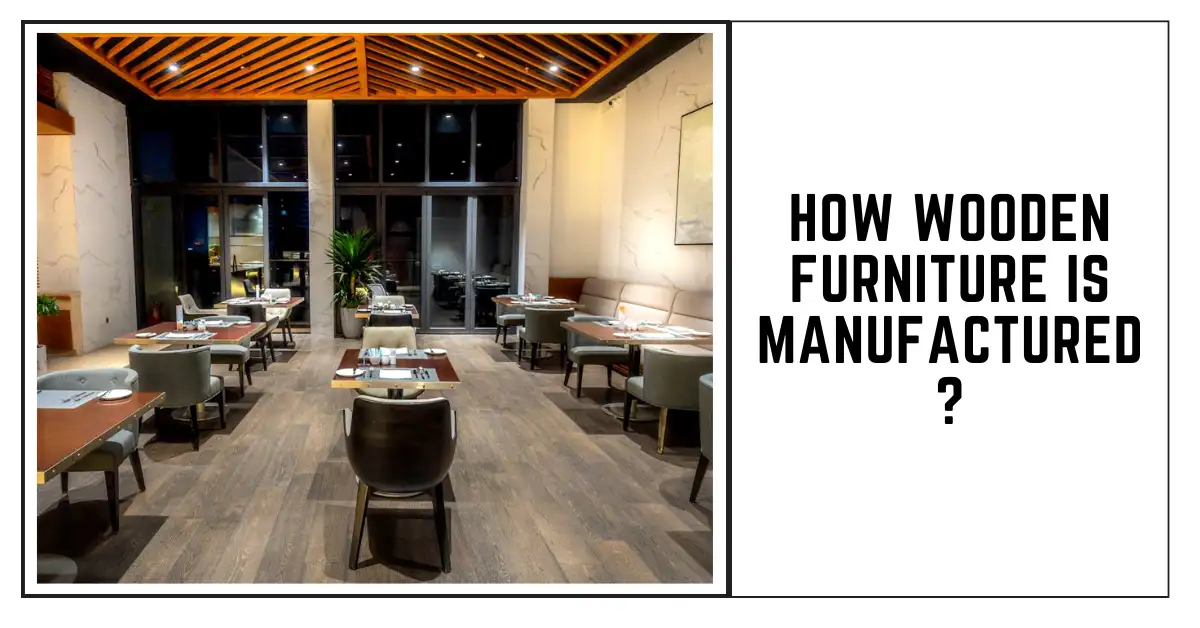How Wooden Furniture Is Manufactured?

How Wooden Furniture Is Manufactured?
Wooden furniture has graced homes for generations. From grand dining sets to simple stools, it shapes our living experience. But have you pondered how it’s put together behind factory doors or in artisanal workshops? It’s far more intricate than basic cutting and hammering. Talented hands and well-planned steps ensure each piece endures. Does the process sound complex? Let’s break it down into straightforward sections. Remember the phrase, “Well begun is half done.” You’ll see that each phase is vital for a polished outcome.
Selecting the Wood
The journey begins with choosing the right timber. Pine, oak, teak, maple, each brings unique traits. Some are softer, some sturdier, some show distinct grain patterns. Cost, availability, and usage guide this choice. Want an outdoor bench? Try teak or cedar for their weather tolerance. A coffee table? Oak might handle daily stress well. Think of it as the foundation of the entire piece. If the wood isn’t suitable, no fancy finish will fix it.
VISIT FOR :: acacia wood furniture
Drying and Seasoning
Freshly cut wood holds moisture. Too much water leads to warping or cracks.Hence, logs are dried, either through natural air-drying or kiln-drying. Air-drying can stretch over months, letting nature do its work. Kiln-drying uses controlled heat and airflow, speeding things up. This step is key for long-term stability. Damp wood can twist, so careful drying lays the groundwork for a solid product.
Rough Sizing
After proper drying, logs get cut into rough boards or planks. Circular saws and band saws help shape them. These planks aren’t smooth yet; they just match certain thicknesses. Operators watch for consistent cuts, minimizing wasted material. Quality checks occur here, weeding out visibly flawed sections. Safety is high priority, given the machinery involved. Accurate cuts now save rework later.
Planning and Design
With basic boards ready, designers finalize the plan. They might sketch by hand or use software to outline shapes. Curvy details or simple straight lines? The style, function, and target market matter here. For mass production, a prototype might be tested. For custom orders, the client’s ideas shape measurements. No matter the approach, design clarity helps avoid headaches down the road.
Cutting and Shaping Components
Each furniture section is carefully cut. For instance, a table might need a top, four legs, and support beams. High-tech factories may use CNC machines for consistent, intricate cuts. Smaller shops rely on saws and chisels guided by skilled artisans. Edges get rounded, grooves are carved, and details appear. This is where a lifeless plank becomes part of a future masterpiece. A steady hand and a keen eye matter greatly.
Joinery and Assembly
Joints hold the entire piece together. You might spot dovetail joints in drawers or mortise-and-tenon in frames. These methods maximize surface contact for sturdiness. Adhesive, screws, or nails may add extra grip. In high-end creations, hardware is often discreet or absent entirely. Assembly might be done in sections, like building the frame first, then attaching legs. Clamps hold pieces in place until adhesives set. “Slow and steady wins the race,” especially in assembly.
Sanding and Preparing the Surface
Once the structure is secure, surfaces need smoothing.Sanding removes rough spots, machine marks, or minor scratches. Coarse-grit paper handles bigger flaws; fine-grit finishes the job. Corners or carved details might need hand-sanding or specialty tools. Manufacturers blow or wipe away dust to get a pristine surface for finishing. Skip this step, and you risk a patchy or rough end product.
VISIT FOR :: bajot
Finishing Touches
Wood finishing can involve stains, paints, or clear varnishes. A stain seeps into the wood, enhancing natural patterns. Varnish forms a protective layer.Lacquer or shellac can add a shine or subtle glow. Spraying, brushing, or even rubbing may be used. Each coat dries before another is applied. Rushing might cause bubbles or uneven surfaces. The aim is to safeguard the wood while revealing its grain.
Curing and Polishing
After the final coat, items might need time to cure fully. Curing ensures the finish hardens, resisting scratches or watermarks. Some shops do a gentle buff to remove tiny imperfections. Wax or polish can add a final layer of protection and luster. The piece may then sparkle, showing off every swirl of the wood grain. “Patience is a virtue” indeed, an extra day of curing can prevent quick damage.
Quality Inspection
Before dispatch, there’s a thorough check. Inspectors look for wobbly legs, rough edges, or finish defects. Drawers must glide smoothly; doors should align neatly. If something’s amiss, they fix it on the spot. Rejecting flawed pieces protects the brand’s reputation.In mass production, this step is systematic. In artisanal workshops, it might be a more personal, hands-on check.
Packaging and Shipping
Once approved, furniture is wrapped for transport. Corners may get foam padding or corrugated guards. Overseas shipments often require crates to handle rough handling.Proper labeling helps carriers know which side is up or if it’s fragile. Logistics teams coordinate loading into trucks or containers. After that, it’s on its way to the buyer. Nothing’s worse than a perfect piece arriving scratched due to poor packaging.
Conclusion
From logging to final polishing, wooden furniture manufacturing is an art and a science. It blends planning, craftsmanship, and modern tools. Each step, wood selection, drying, cutting, joining, finishing, adds up to a lasting piece. So that new table or cozy armchair in your home? It carries a story of careful work. Next time you admire a wooden surface, recall the journey it took from the forest to your living space.
READ MORE :: Top 10 Good Furniture Shops in Mumbai, Maharashtra

